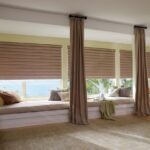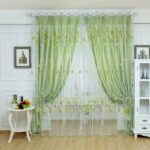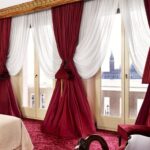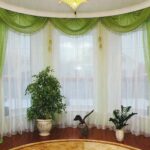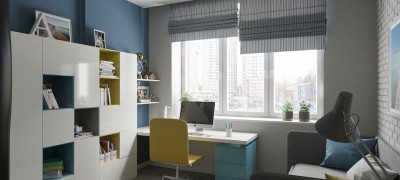How to correctly calculate tulle for a window in width
Today the market offers a wide range of curtains and tulle. But in most cases, people are faced with the problem of uneven windows. Very often, after sewing custom-made tulle, a person tries to return the product, because it does not fit the design. Not everyone can afford to buy a canvas made of expensive material, so the hostesses are trying to sew the curtain on their own. It is actually easy to assemble, but it will require correct measurements of the window.

- Measurements and calculations
- Selecting the size of the tulle
- Length selection
- Width selection
- Features of window decoration with tulle
- Build ratio
- Using short curtains
- Video: how to calculate the tulle for the window correctly
- Photo gallery: options for the selection of curtains and tulle for different rooms
Measurements and calculations
In order to create the perfect decoration, you need to know how to calculate the tulle for the window.
It is better to use a steel construction tape to measure the window opening. With its help, you will carry out the calculations accurately. Also consider the height of the eaves and the presence of rings that attach the material. It is best to attach the curtain in advance in order to correctly calculate the length and not be mistaken with the size of the fabric.

Write down all the numbers so as not to be mistaken in the formula. Measure the length of the cornice, the height of the window, taking into account the mounting method.
A special curtain tape will easily help attach the tulle to the curtain rod. You can also attach thanks to loops, eyelets, pencil waves, triple pleats and buffers.

Selecting the size of the tulle
How to understand what size the tulle should be for a specific width of the translucent curtain. For a light veil, the coefficient is 1.5-2. For a dense and durable texture, it is calculated as follows:
- With a curtain rod length of 3 meters, 6 centimeters is added to the allowances. With a factor of 1.5, you get 4 meters and 56 centimeters of fabric ((300 * 1.5) +6).
- If the fabric is light, then you can allow yourself to create a beautiful wave.
- With a cornice length of 3 meters, 6 centimeters of allowances and a factor of 2, you get 6 meters and 6 centimeters of material ((300 * 2) +6).

On small windows
Small window openings can also be beautifully decorated. In this case, a person can show maximum imagination and courage. A small window allows you to combine those things that are unacceptable for large ones.

Creative options for a small window opening:
- Grandma's tulle. You've definitely read about him in books or seen in films. A country house is often decorated with this type of curtains. Everything is fastened with the help of an unusual cornice, which you can create yourself. Tulle is decorated with large bows of the same material.
- Sliding tulle. Almost any fabric will work here. Match with furniture or walls.
- Roman or rolled tulle. An unusual color combination will help decorate your home in a stylish and modern way.

On the window 2 meters
In order to measure the amount of canvas for 2 meters of the height of the cornice, you need to decide on the type of wave. How much tulle is needed for a 2-meter cornice. Knowing the crease factor makes it easy to calculate the size. If the wave should be with a factor of 2.5 (glass shape), then the calculation is as follows: (2 * 2.5) + 6 centimeters at the edges. It turns out 5 meters and 6 centimeters of fabric for a 2 meter window.

3 meters
People often wonder how many meters of tulle are needed for a 3-meter window, because the width is mostly standard and depends more on the assembly of the waves. The span is chosen from 4.5 meters to 9. Note that the width is not measured by the distance between the frame, but by the length of the cornice. You should also consider decorations, such as knobs.
If the cornice is equal to three meters, then it is worth deciding on the type of fold and calculating it using a special formula. When you know the crease factor, you can find out the width of the tulle for sewing.

If you want to create a curtain with a goblet wave, then the formula is: 3 meters * 2.5 (this is the goblet fold coefficient). It will turn out to be 7.5 meters. To this figure we add another 6 centimeters at the edges. It turns out that for tulle with a goblet wave, you need to purchase 7 meters 56 centimeters of fabric.
Calculation of tulle on the cornice
To calculate the length of the cornice, you should learn about the filling.

Note! Filling is one of the important elements in the calculation. The splendor of the tulle as a result will depend on this.
Filling is of the following types:
- Small. This is a minimal build. Experts say that it is impossible to take less than 1: 1.5. If the width of the window is three meters, then fabrics will be needed: 3 * 1.5 = 4.5 meters. You can take less, but keep in mind that you end up with an inconspicuous curtain.
- Average. Here, take a ratio of 1: 2. If the window is three meters, then you need 3 * 2 = 6 meters of material. Most often, customers choose this particular filling because it creates a beautiful design with small but even waves.
- Full. The luxury of this filling is calculated according to the formula: 1: 3. Such a tulle will look lush and rich. If the window is three meters, then the fabric is needed: 3 * 3 = 9 meters. Additional information: this curtain will perfectly transform with large ornaments or embroidery. It is better not to use drapery, because it will hide the whole design.
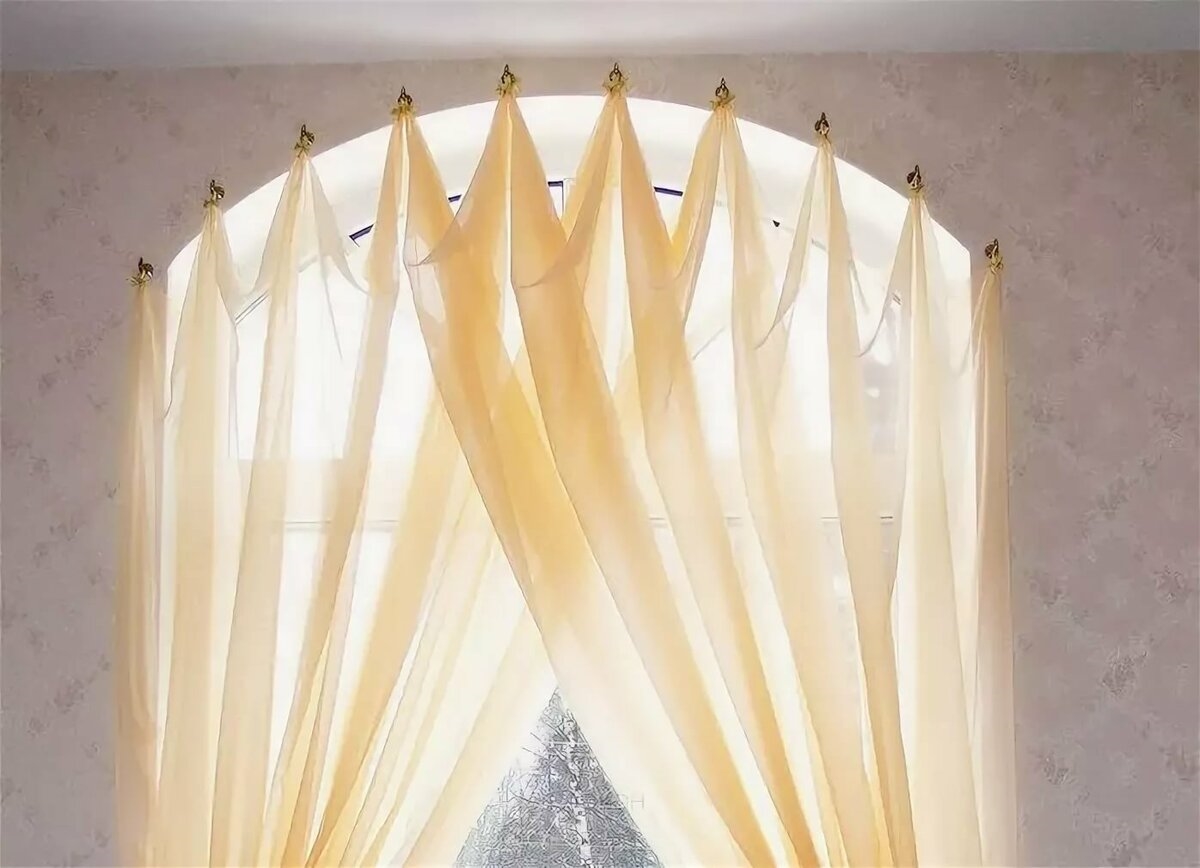
They also highlight the nuances that directly affect the calculation:
- Material thickness. If the fabric is very dense, then the filling should be minimal. If you take a magnificent type, then the room will plunge into darkness, and the sun will not be able to penetrate the house. If the material is very thin, then choose a large filling accordingly.
- Patterns. If the fabric is with an ornament, then the coefficient is also selected to be minimal. If the ornament is large, then the large pictures will get lost in the folds, and the design will look ridiculous.
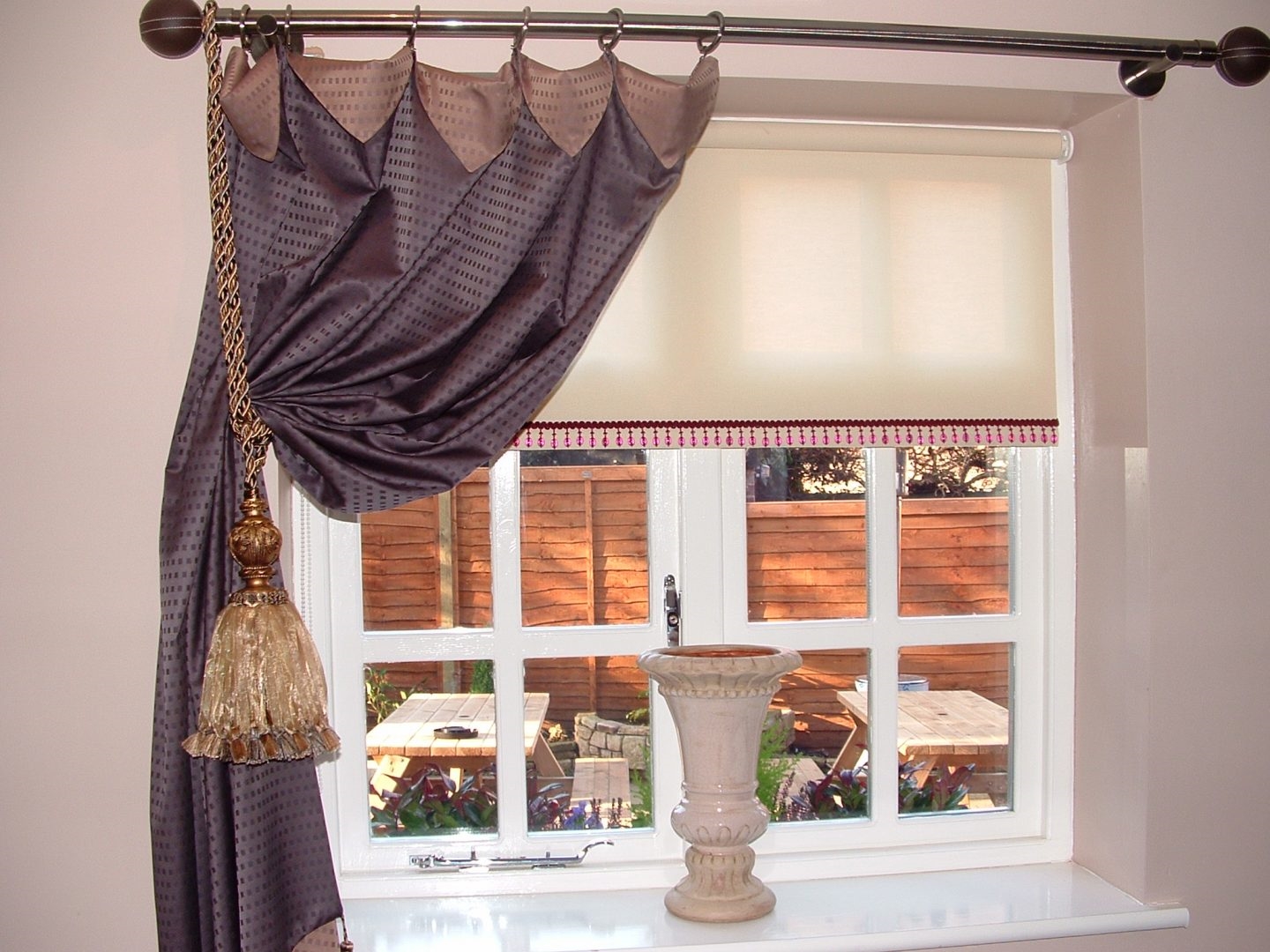
Length selection
The most common types of tulle lengths are:
- Up to the windowsill.
- Behind the windowsill.
- To the floor.
Tulle up to the windowsill is usually hung in the kitchen or in the nursery.In these rooms it is practical, because the curtain covers the window and does not interfere with the operation.

Important: 1 centimeter of the edge of the tulle should not touch the window sill so that the product can move freely. You can also use the canvas up to the windowsill in the room in which you want to use the stove for a special purpose.
The tulle below the windowsill looks more elegant and beautiful. Add 10-15 centimeters to the height of the stove so that the curtain hangs evenly.
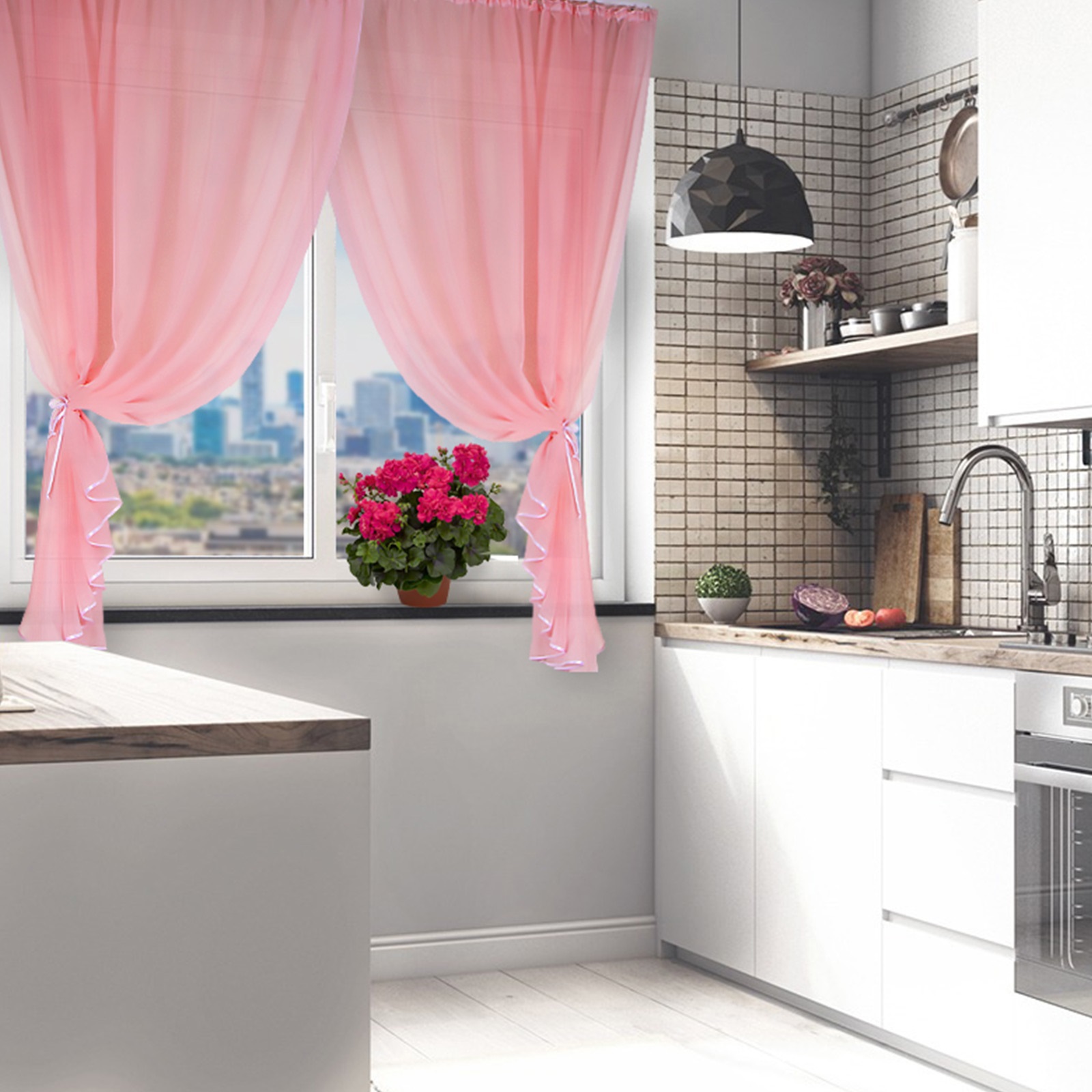
Advice. If you choose tulle to the floor, then keep in mind that it should be one centimeter higher than the covering. This way you protect it from dirt and wear. If you have a large living room, no pets and small children, then you can decorate the room with long tulle.
Width selection
How to calculate the width of the tulle. The base figure is also the length of the cornice. In the living room and the hall, wide tulle is most often chosen, which covers the entire window surface. Consider the walls that the curtain must close. It all depends on the depth of the waves, so we use the same formula.

Additional Information! To save material for a 3 meter cornice, choose a 5 meter fabric. The main canvas will be in the center, and the edges can be decorated with a curtain.
Features of window decoration with tulle
If you collect tulle in beautiful waves, then it will all look luxurious and relaxed. Previously, the folds were created on their own. But now a special tulle tape has appeared, which will make even waves quickly and effectively.

This ribbon looks like a strip of lightweight material with laces. If you sew the ribbon to the tulle and tighten the thread, then the waves will turn out to be even and beautiful. You can attach it thanks to the textile eyelets, which in turn are sold with hooks.
For tulle, it is better to choose a transparent ribbon. On light fabrics, such as organza or mesh, it will be invisible. Curtains and thick materials look better and hold onto sturdy mounts.
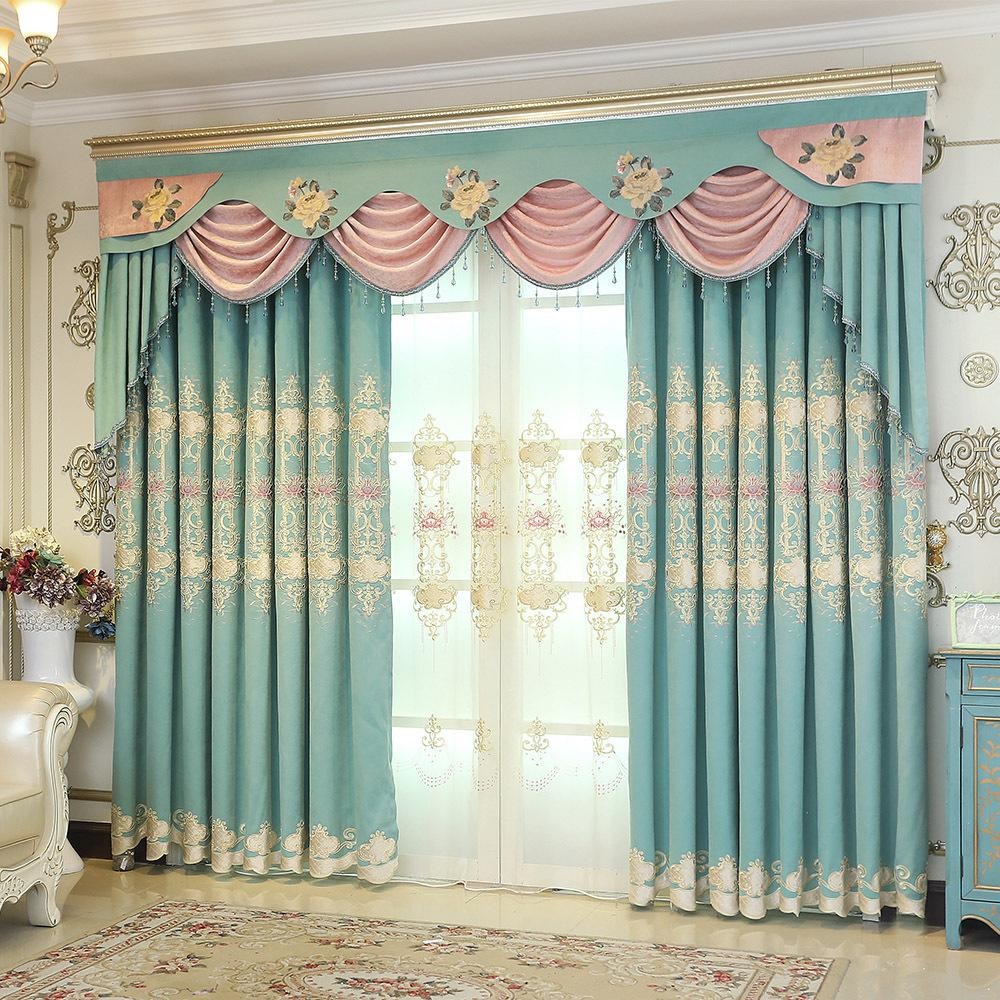
Note! Durable fabric is made from natural material - cotton. Buy more tape than necessary so that after washing it can “shrink” by 10-15 percent of its original size. You can also steam it before sewing.
There are different types of belts that create a custom assembly.
- Uniform waves. After you tighten the lace, the fold will be in a straight pencil.
- Boof. Such a wave is also called a waffle, because it is very similar to sweetness.
- Glass or shot glass. The relief resembles an interesting goblet wave.
- Bow. Equal wave bows are produced on the material. It is impossible to do this without a tape and experience.
- Goose feet. Triple and uniform wave on the fabric.

On the kitchen
The kitchen is advised to choose a simple translucent tulle. Possible solid color with a small ornament. The main thing is that the chosen product gives comfort and home peace. Prepare a veil, organza, and smoky mesh. It is necessary that the fabric does not deteriorate from the sun color and does not get very dirty.

In the children's room
The children's room is filled with vibrant and bold colors. The tone of the tulle is matched to the tastes of the child, so you don't have to be limited. Pastel colors, white tulle, large prints and lush bows will decorate the room. If the child is small, then it is best to choose short curtains so that the baby does not break it off and stains less. For older children, using curtains, you can create a real kingdom.
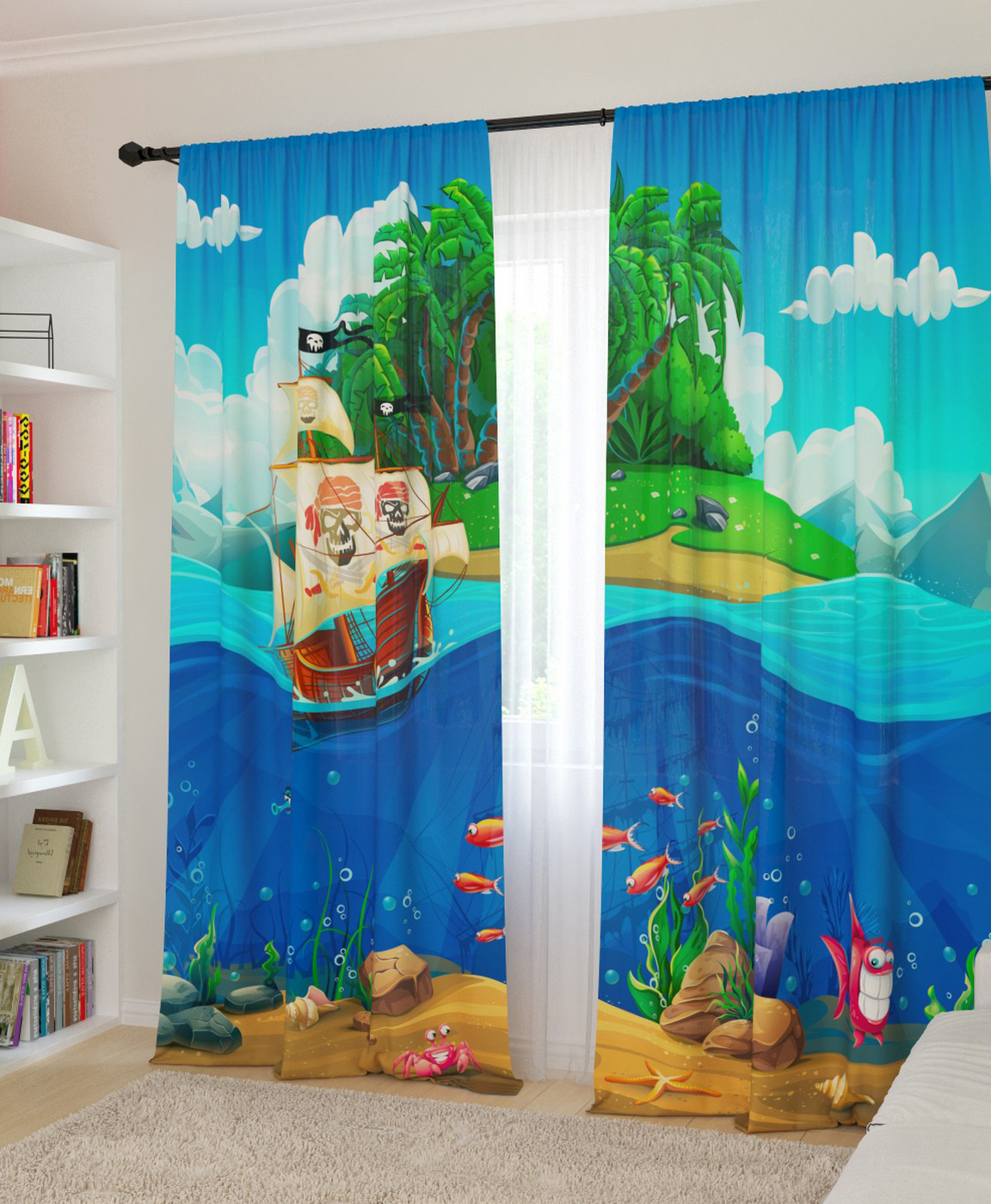
In the bedroom
For a bedroom, the assortment is wide enough. Manufacturers offer many options for colors, shapes and designs. Veil, light organza, viscose and tulle will fit perfectly.

In the living room
For the living room, it is advised to use light translucent tulle, which transmits light and air well. It can be combined with a curtain, lambrequin, drapery, embroidery and lace. Multilayer products in different shades are considered relevant.

In the room
If the curtain is the main element in the room, then choose a rich and bright fabric. If this is an addition, then buy an inconspicuous lightweight canvas. Consider the overall design of the room. If you prefer the classics, then lambrequins, shuttlecocks and hooks will perfectly fit. If you want to keep it minimal, then pay attention to the texture and color. Almost any tulle is suitable for the hall, the main thing is that it is combined with the overall picture.
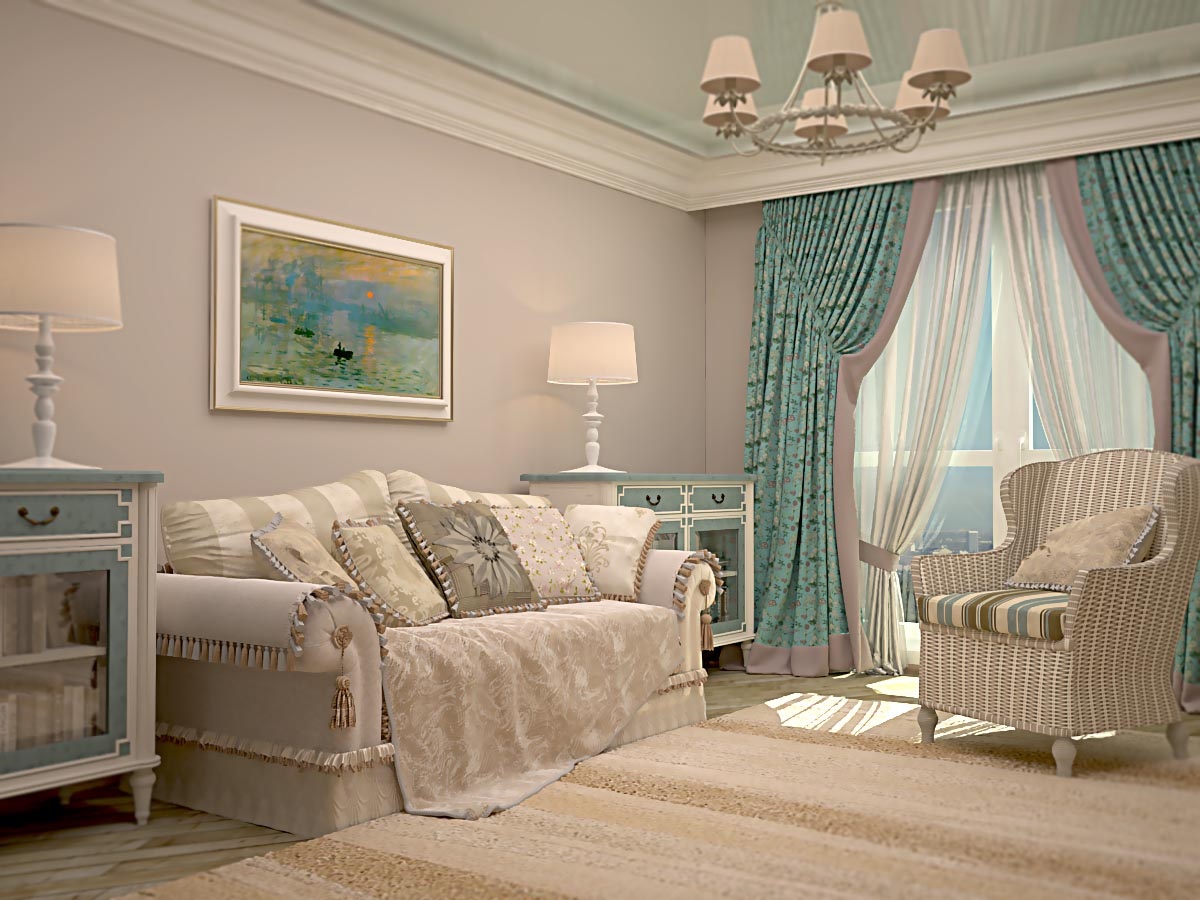
Build ratio
If you have fabric and you know what kind of fold you want to see on the tulle, then you need to calculate the gathering factor. This will help you know how much fabric you need to create the waves. The yardage is responsible for the size of the material in width. The splendor of the folds as a result depends on the correct calculations.
Before proceeding with the calculation, you need to measure the length of the cornice and the model of the braid.

The width is calculated very simply: the size of the fabric = the gathering factor is multiplied by the length of the cornice.
Decide on the type of wave, because each type assumes a different formula:
- For a pencil, the build factor will be 2.5-3.
- For puffs - 1.5-2.5.
- Goose legs are formed at a factor of 2.
- Glasses and bows - 2.5-3.
By calculating the assembly factor (KC), you will find out the required measurements of the material. It is calculated like this: the coefficient is multiplied by the length of the cornice. For example, kf is 1.5, and the length of the curtain is 300 centimeters. This gives 1.5 * 300 = 450 centimeters (4.5 meters of fabric).

Consider the side seams of the curtain. Leave 3 centimeters on each side of the tulle. That is, if you follow the example, then 4.5 + 6 centimeters = 5.1 meters.
Using short curtains
It is unwise to use a long curtain in some rooms, as well as in small houses. Therefore, they choose short curtains, which are no worse than lush long ones, and in some cases even look more advantageous. Pros of short tulle:
- open access to the windowsill.
- direct approach to the air.
- ease of care.
- less contaminated.
- less material required

Small curtains are available in a variety of designs and colors. Light air curtains are suitable from a veil, and cotton fabric is bought for the Austrian style. With such a tulle, it is easy to stylishly decorate a window, because the material is quite soft, and uniform waves are created automatically.
The width and height of the tulle is extremely important for the overall picture of the room. Look at the photo on the Internet and decide on the type of wave. No need to rush and take "by eye". Get it right and enjoy the style and comfort.
Video: how to calculate the tulle for the window correctly


